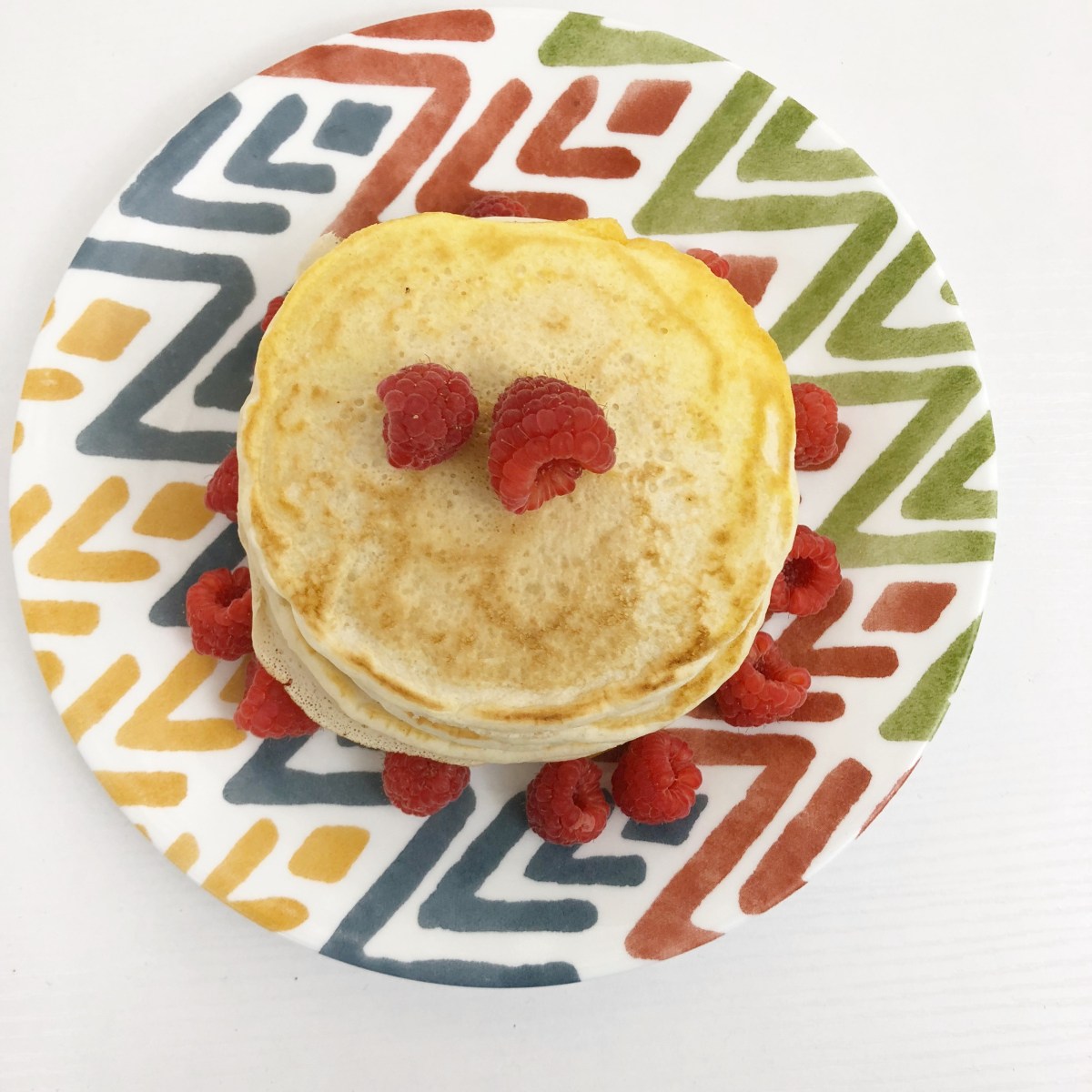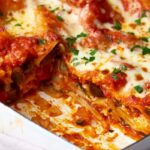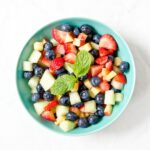Imagine a breakfast that’s both incredibly delicious and effortlessly healthy, ready in minutes even on your busiest mornings. Forget soggy, flavorless pancakes; prepare yourself for a vibrant explosion of protein-packed goodness with our High-Protein Flexitarian Pancakes for Busy Days. These recipes offer a delightful balance of satisfying protein, flexible ingredients, and speed, making them the perfect solution for those who crave a nutritious and tasty start to the day without sacrificing precious time. Whether you’re a seasoned cook or a kitchen novice, these adaptable recipes will become your new breakfast staple.
We’ll explore three unique pancake variations, each showcasing a different high-protein base – think creamy Greek yogurt, tangy cottage cheese, or a boost from your favorite protein powder. We’ll guide you through the process step-by-step, sharing expert tips and tricks to achieve that perfect golden-brown exterior and fluffy interior. Learn how to easily adapt the recipes to suit various dietary needs and preferences, from gluten-free to dairy-free options. Finally, discover creative serving suggestions and time-saving meal prep strategies that will revolutionize your breakfast routine, ensuring a consistently satisfying and nutritious start to every day.
Recipe Variations
These three high-protein flexitarian pancake recipes offer diverse flavor profiles and textures, catering to various dietary preferences and showcasing the versatility of this breakfast staple. Each recipe provides a complete and balanced meal, perfect for a busy morning. They are designed to be quick and easy to prepare, minimizing time spent in the kitchen while maximizing nutritional benefits.
Greek Yogurt Pancakes
This recipe utilizes Greek yogurt as the primary protein source, resulting in a delightfully fluffy and subtly tangy pancake. The addition of berries provides a burst of sweetness and antioxidants.
Ingredients (serves 2): 1 cup plain Greek yogurt (full-fat recommended), 1 cup whole wheat flour, 1 teaspoon baking powder, ½ teaspoon baking soda, ¼ teaspoon salt, 1 large egg, ½ cup milk (dairy or non-dairy), ¼ cup mixed berries.
Preparation Time: 15 minutes
Instructions: In a large bowl, whisk together flour, baking powder, baking soda, and salt. In a separate bowl, combine Greek yogurt, egg, and milk. Gently fold the wet ingredients into the dry ingredients until just combined. Gently fold in the berries. Cook pancakes on a lightly oiled griddle over medium heat for 2-3 minutes per side, or until golden brown.
Cottage Cheese Pancakes
These pancakes offer a surprisingly creamy texture and a mild, savory flavor, thanks to the inclusion of cottage cheese. The addition of spinach provides a boost of vitamins and minerals.
Ingredients (serves 2): 1 cup low-fat cottage cheese, ½ cup whole wheat flour, 1 teaspoon baking powder, ¼ teaspoon salt, 1 large egg, 2 tablespoons milk (dairy or non-dairy), 1 cup chopped spinach.
Preparation Time: 15 minutes
Instructions: In a food processor, blend cottage cheese until smooth. In a bowl, combine flour, baking powder, and salt. Add the blended cottage cheese, egg, and milk to the dry ingredients. Gently fold in the spinach. Cook pancakes on a lightly oiled griddle over medium heat for 2-3 minutes per side, or until golden brown.
Protein Powder Pancakes
This recipe incorporates protein powder for a significant protein boost, creating dense and satisfying pancakes. The addition of banana provides natural sweetness and potassium.
Ingredients (serves 2): 1 scoop vanilla protein powder (whey or plant-based), ½ cup whole wheat flour, 1 teaspoon baking powder, ¼ teaspoon salt, 1 ripe banana, mashed, 1 large egg, ½ cup milk (dairy or non-dairy).
Preparation Time: 10 minutes
Instructions: In a bowl, mash the banana. Add protein powder, flour, baking powder, and salt. In a separate bowl, whisk together the egg and milk. Combine wet and dry ingredients, mixing until just combined. Cook pancakes on a lightly oiled griddle over medium heat for 2-3 minutes per side, or until golden brown.
Nutritional Comparison
This table provides a comparative overview of the nutritional profile of each pancake recipe. Note that calorie counts are estimates and may vary based on specific ingredients used.
| Recipe Name | Protein Source | Key Ingredients | Calories per Serving (approx.) |
|---|---|---|---|
| Greek Yogurt Pancakes | Greek Yogurt | Greek Yogurt, Whole Wheat Flour, Berries | 250-300 |
| Cottage Cheese Pancakes | Cottage Cheese | Cottage Cheese, Whole Wheat Flour, Spinach | 200-250 |
| Protein Powder Pancakes | Protein Powder | Protein Powder, Whole Wheat Flour, Banana | 280-330 |
Step-by-Step Cooking Instructions

Making these high-protein flexitarian pancakes is a straightforward process, perfect for even the busiest mornings. The recipe below yields approximately 6-8 fluffy pancakes, depending on size. Careful attention to a few key steps will ensure perfectly browned, tender pancakes every time.
This detailed guide focuses on making the basic recipe, easily adaptable to your preferred cooking method. Remember to adjust cooking time based on your stovetop or griddle’s heat intensity.
Pancake Batter Preparation
Creating a smooth, lump-free batter is crucial for perfectly textured pancakes. The following steps detail the process, emphasizing techniques for optimal results.
- In a large bowl, whisk together 1 cup of gluten-free all-purpose flour blend (or regular all-purpose flour), 1 scoop (approximately 30g) of your favorite protein powder (whey, casein, soy, or plant-based), 2 tablespoons of granulated sugar, 1 teaspoon of baking powder, 1/2 teaspoon of baking soda, and 1/4 teaspoon of salt. Ensure all dry ingredients are thoroughly combined to prevent pockets of baking powder or soda.
- In a separate bowl, whisk together 1 cup of unsweetened almond milk (or any milk of your choice), 1 large egg, and 1 tablespoon of melted coconut oil (or other oil). This creates a smooth, emulsified liquid base that prevents lumps.
- Gradually add the wet ingredients to the dry ingredients, whisking gently until just combined. Over-mixing develops gluten (even in gluten-free flour), leading to tough pancakes. A few small lumps are acceptable; don’t strive for absolute smoothness.
- Gently fold in 1/2 cup of blueberries (or any other desired fruit or vegetables, such as chopped spinach or zucchini) Incorporating the add-ins gently prevents them from sinking to the bottom during cooking.
Cooking the Pancakes
Achieving even browning and a fluffy interior requires careful attention to heat and cooking time. The following steps provide guidance for both stovetop and griddle cooking.
- Stovetop Method: Heat a lightly oiled griddle or large non-stick skillet over medium heat. A lightly smoking surface indicates the pan is ready. Pour 1/4 cup of batter onto the hot surface for each pancake.
- Griddle Method: Preheat your electric griddle to medium heat. Lightly oil the surface. Pour 1/4 cup of batter onto the hot surface for each pancake. Electric griddles often provide more even heat distribution.
- Cook for 2-3 minutes per side, or until golden brown and cooked through. Flip the pancakes when bubbles start to form on the surface and the edges appear set. Avoid pressing down on the pancakes while cooking, as this can make them flat.
- Serve immediately with your favorite toppings. Enjoy!
Troubleshooting and Tips for Perfect Pancakes
This section addresses common issues and offers solutions to help you consistently achieve delicious pancakes.
- Lumpy Batter: If your batter is too lumpy, whisk the wet ingredients more vigorously before combining them with the dry ingredients. Avoid over-mixing once the wet and dry ingredients are combined.
- Uneven Browning: Ensure your cooking surface is evenly heated. Adjust the heat as needed to prevent burning or undercooking. If using a stovetop, rotate the pan occasionally for even heat distribution.
- Flat Pancakes: Avoid pressing down on the pancakes while they cook. Let them cook undisturbed until they are set around the edges and bubbles form on the surface before flipping.
- Burning Pancakes: Reduce the heat if your pancakes are browning too quickly. Ensure your cooking surface is lightly oiled to prevent sticking.
Ingredient Substitutions and Dietary Adaptations
These high-protein flexitarian pancakes offer a delicious and adaptable base recipe. The beauty lies in its versatility; you can easily swap ingredients to suit your dietary needs and preferences, creating a unique pancake experience each time. This section explores potential substitutions for key ingredients and provides guidance on adapting the recipe for various dietary restrictions.
Ingredient Substitution Options
This recipe’s flexibility shines through its adaptable ingredient list. Let’s explore some viable alternatives for key components, considering their impact on both nutritional profile and taste. Remember that precise substitutions might necessitate minor recipe adjustments, such as adding more liquid for drier ingredients or reducing liquid for wetter ones.
- Flour: Instead of all-purpose flour, consider substituting with:
- Oat flour: Adds a subtly sweet and hearty flavor. Nutritional value increases slightly in fiber, but protein content might be marginally lower. Imagine the texture: a slightly denser, chewier pancake.
- Almond flour: Provides a denser, nuttier pancake with a slightly lower protein content compared to all-purpose flour but higher in healthy fats. Picture a delicately crumbly texture with a rich aroma.
- Buckwheat flour: Offers a slightly earthy and nutty flavor with a good source of fiber and slightly more protein than all-purpose flour. Expect a darker, more substantial pancake.
- Protein Powder: While whey protein is used in the base recipe, several alternatives exist:
- Soy protein isolate: A complete protein source, offering a similar protein boost but with a slightly different taste. The pancakes might have a slightly beany flavor.
- Brown rice protein: A hypoallergenic option, though the protein content might be slightly lower than whey. Expect a milder flavor, almost neutral.
- Pea protein: Another hypoallergenic option with a relatively neutral taste and a good protein content. The texture might be slightly different, potentially slightly drier.
- Milk: The recipe uses milk for moisture and richness; however, substitutions are readily available:
- Almond milk: Offers a subtly nutty flavor and is dairy-free. The protein content will be lower, and the texture might be slightly thinner.
- Soy milk: A good source of protein, providing a similar consistency to cow’s milk but with a slightly beany taste. The protein content is comparable or even higher than cow’s milk.
- Oat milk: Provides a creamy texture and a slightly sweet flavor, but the protein content will be lower than cow’s milk. The pancakes will have a slightly oatier flavor.
Dietary Adaptations
Adapting this recipe to accommodate various dietary needs is straightforward. The following bullet points Artikel modifications for common restrictions.
- Gluten-Free: Use a gluten-free flour blend (ensure it includes a binding agent like xanthan gum) instead of all-purpose flour. Many gluten-free flour blends are available commercially.
- Dairy-Free: Substitute dairy milk with any plant-based milk alternative (almond, soy, oat, etc.). Ensure your protein powder is also dairy-free.
- Nut-Free: Omit any nut-based ingredients (like almond flour or nut butters). Use alternative flours like oat flour, brown rice flour, or a gluten-free blend. Be mindful of cross-contamination during preparation.
Nutritional Benefits of Key Ingredients
The ingredients selected contribute significantly to the nutritional profile of these pancakes. For instance, the protein powder provides a substantial protein boost, crucial for satiety and muscle building. The addition of whole grains, if using oat or buckwheat flour, increases fiber intake, aiding digestion and promoting gut health. The use of milk (or its alternatives) adds calcium and other essential micronutrients. The specific micronutrients will vary depending on the chosen ingredients and their brands. For example, choosing fortified plant milks can boost vitamin D and calcium levels.
From the fluffy texture of the Greek yogurt pancakes to the subtly sweet notes of the cottage cheese version, and the powerful protein punch of the protein powder pancakes, these recipes offer a versatile and delicious way to fuel your day. Mastering the art of the perfect pancake has never been easier, thanks to our detailed instructions and adaptable recipes. By embracing meal prepping and quick cooking techniques, you can enjoy a healthy and satisfying breakfast without the time constraints of a busy morning. So ditch the sugary cereals and embrace the delightful world of High-Protein Flexitarian Pancakes – your taste buds and your body will thank you.
Helpful Answers
Can I use frozen fruit in these pancakes?
Yes! Frozen fruit works perfectly. Just be sure to thaw it slightly before adding it to the batter to prevent it from making the batter too cold and watery.
How long can I store leftover pancakes?
Store leftover pancakes in an airtight container in the refrigerator for up to 3 days. Reheat gently in a pan or microwave.
Are these pancakes suitable for children?
Yes, these pancakes are generally suitable for children, but always check for any allergies or dietary restrictions before serving. You can adjust sweetness levels to suit their preferences.
Can I make these pancakes ahead of time and freeze them?
Yes, you can freeze cooked pancakes. Allow them to cool completely, then wrap individually in plastic wrap and place in a freezer-safe bag. Reheat from frozen in a toaster or pan.


